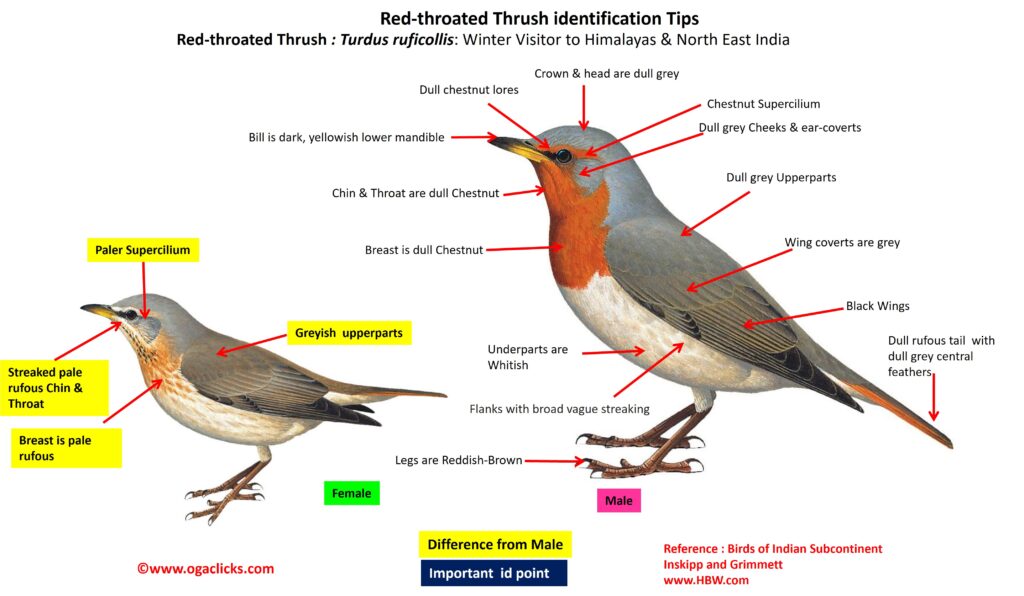
Red-throated Thrush Turdus ruficollis
Etymology:
- Turdus: Latin word for Thrush
- Ruficollis: Latin word Rufi –Red; Collis- Neck, Collar { Red necked}
Distribution: Winter visitor in Himalayas and North East India
Description: Size of 28 cm; wt. of 63–103 g. The male is dull pale grey above, with dull rufous-chestnut supercilium, subocular area and chin to lower breast and neck side. It has a dull rufous tail with dull grey central feathers, off-white belly, and flanks with broad vague streaking. The bill is dark, yellowish lower mandible. The legs are reddish-brown. The female is like male, but paler rufous on face and throat, with blackish streaks. The juvenile is dull brown grey with greyish spots and streaks above, buff-grey on throat, with dark malar leading to thickly spotted breast side, and more dispersed spotting below.
Habitat: It is found in sparse montane forest, upper limit of cedar forest, mossy tree-line scrub, plateau taiga, and bottomland forests in montane river valleys. It winters in open juniper woodland, scrub, and orchards. It is found from foothills to 3900 m.
Food habits: It eats Invertebrates, berries, and some seeds. It forages mainly on ground and in low vegetation. It is found in winter in mixed flocks with other thrush species.
Breeding habits: They breed in May–Jul. The nest is a cup of twigs, moss and stems cemented with mud, lined with finer stems, placed low down in rotten stump or in sheltered fork of tree. They lay a clutch of 4–5 eggs. The incubation period is 10–12 day. The nestling period is 11–13 days.